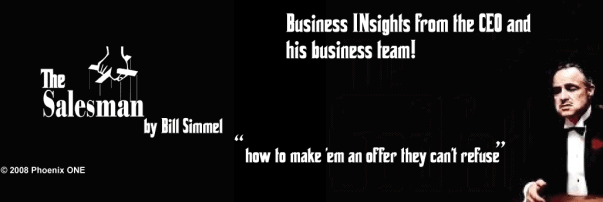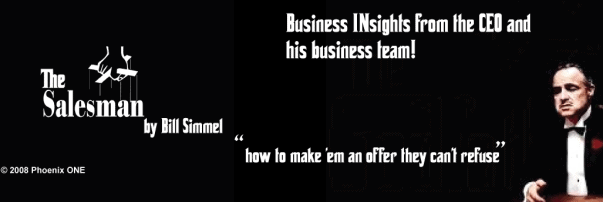Part II
“He’s thinking of going to the mattresses.” — Clemenza to Paulie and Rocco, referring to Sonny’s plan for an all-out war requiring his “button men” to sleep in makeshift warehouses and safe houses (GF I)
Rule #6: Seize the Moment
Your competitor is winning the battle of perceptions. You’re losing mindshare. What do you do? Buy more advertising time? Sponsor a big event? Hold a news conference? Hire a celebrity spokesperson? What if your budget is anemic…then what? Regardless of the scale of your marketing, the important thing is to take a stand, and then take action. Sonny Corleone was not known for his painstaking market research. This is not to suggest you should be rash and impulsive; however, at a certain point, you have to rely on your gut instincts as a marketer and go for it! After all, timing is everything. That’s how campaigns are won and lost. Raise the stakes by bringing urgency to your most important messages. Give your customers a deadline. Force them to make a decision. Hit them from all angles. Sometimes it takes more than numbers to arrive at a difficult decision – it takes nerve. So when the opportunity arises, be prepared to pull out the stops and launch an intense and targeted blitz. Anyway, you don’t want to be too predictable. Use the element of surprise to throw your competitors off guard. Carpe momentum!
“Michael, we’re bigger than U.S. Steel.” – Hyman Roth (GFII)
Rule #7: Think Big
If you’re going to compete with the “big boys,” you might as well put yourself in their class and category. Perception dominates – so start by changing the way you perceive yourself. Branding has a lot to do with confidence. If you act big, bold, and brilliant, chances are the world will see you that way, too. When it comes to marketing, every campaign you launch should embrace one big idea. Focus on the big picture, not the minutiae. Failure to do so will result in your message being diluted, drowned out, and quickly forgotten. Find a major theme to anchor and amplify your message. Put an appropriate frame around it to give it perspective and gravitas. Create affinity with your customers by capturing their hearts, touching a nerve, and becoming, well, unforgettable. Give the world a direct and definitive way to experience your brand on a grand scale. Where would we be without movers and shakers like Edison, Carnegie, Ford, Walton, and Gates who not only had great ideas that changed society, but knew how to market them effectively?
“I believe in America, America has made my fortune.” — Bonasera to Don Vito (GF I)
Rule #8: Be Creative and Innovative
This opening line of The Godfather says it all: Pursue your dreams, make money, and become an entrepreneur in the truest sense of the word. This means shaking off old habits, exploiting any and all marketing opportunities, and occasionally taking the road less traveled. Being a “me too” brand or communicating a cookie-cutter message will not enhance your value or contribute to your lasting success. If we know anything about the American dream, it’s limitless…and it smiles on the marketer with a better, faster, and cheaper mousetrap. Look at the phenomenal growth and success of the iPod. Within a few short years, Apple applied its vision and resources, and virtually cornered the market for digital audio players that use hard drives. Innovation is either part of your corporate culture, or it’s not. Find a new solution to an old problem. Reinvent your old bag of tricks. Challenge yourself. Break from convention, but know the rules you’re breaking. Make your message fun and fresh. Surprise and delight an unsuspecting world. Of course, that means going the extra mile – but, as they say, it’s never crowded.
“This I cannot do.” — Don Vito to Bonasera (GF I) and Michael to Don Altobello (GF III)
Rule #9: Know Yourself
With all due respect to Socrates, who popularized the famous inscription at the Apollo Temple in Delphi3 (“gnothi se auton”) and Shakespeare, who paraphrased it in Hamlet, Act I, Scene III (“to thine own self be true”), the maxim lives on in The Godfather. The Corleone patriarchs relied on the wisdom that comes with self-knowledge. Their values, both for good and ill, formed the unshakable foundation of their vision. Determine which ones are revered and shared within your organization. Remember, they’re not core values if you drop them because they end up costing you too much or put you at a competitive disadvantage. Values are universal and timeless. They stand the test of time and create a strong affinity with those who believe in your organization. Values, and the standards they uphold, provide insight into your organization’s brand character. The fundamental principles you cherish are the bedrock of your brand. They guide your organization’s behavior, and put the world on notice that there is some backbone behind your message. When all else slips and stumbles (e.g., the economy, your market share, your profits, etc.), you’ll always have your values to fall back on.
“I’m gonna make him an offer he can’t refuse.” – Don Vito to Johnny Fontane, referring to Jack Woltz (I) and Michael to Fredo, referring to Moe Green (GF I) – the most famous of all lines
Rule #10: Make It Compelling
What makes a brand memorable and a message compelling? Is it the free offer? The iron-clad guarantee? The gushing testimonials? The edgy creative and clever copy? It’s all those things…and more. A compelling message has a story behind it, a story with dramatic appeal. It’s show time! It’s time to make your customers go a-ha! It’s time to move and motivate them. It’s time to deliver the flawless elevator pitch, get the “yes,” and go for the close. However, you must first build trust by establishing a consistent track record. Second, communicate with your stakeholders often and listen for the gold (e.g., understand their needs, fears, frustrations, aspirations, etc.). Third, make them an offer they would be ill-advised to dismiss or ignore. This is the essence of marketing, the raison d’etre of your message, and the whole purpose of your campaign. If you follow the first nine rules, the final rule should be a “piece of cannoli.” After the dust has settled, if your customers still haven’t opened their hearts and wallets, revisit Rule #6 and think about going to the mattresses again!
Summary
The philosophy of The Godfather tells you everything you need to know about communicating a compelling message, owning and occupying a strong market position, and building and packaging a memorable brand. Whether your game is business or politics, survival is everything – protecting your turf, avoiding pitfalls, and capitalizing on opportunities, or, in other words, staying on top while improving the bottom line.
Your message is in a constant struggle to be heard and understood in a vast sea of competing messages. In the course of your marketing campaign, take time to review, test, and measure the reach and impact of your message, brand awareness, and competitive position. In a world where perceptions dominate, messages can be easily countered and co-opted, brands can weaken and wane from benign neglect, and competitive positions are subject to the old switcheroo. But here’s the good news: When you find yourself off-message, get back on track; if your brand needs a lift, give it a makeover; and if your position is assaulted, put your best button men (read guerrilla marketers) on the street. In sum, if “there’s a stone in your shoe, remove it.”
I suspect that in another thirty years, the lessons of The Godfather will be no less instructive. As long as we continue to thrive in a global marketplace where new ideas, services, and technologies comprise the intellectual currency of the realm, there will always be a need for tough, clever, and solution-oriented marketing.
To each of you that are inspired by the wisdom of The Godfather, Michael Corleone’s traditional Italian toast on the shore of Lake Tahoe is definitely in order: “Cent’Anni” (for 100 years), from Bill Simmel.
This was first published in Bill Simmel ‘s AdMarketingGuy blog: YourBusinessWisdom→


